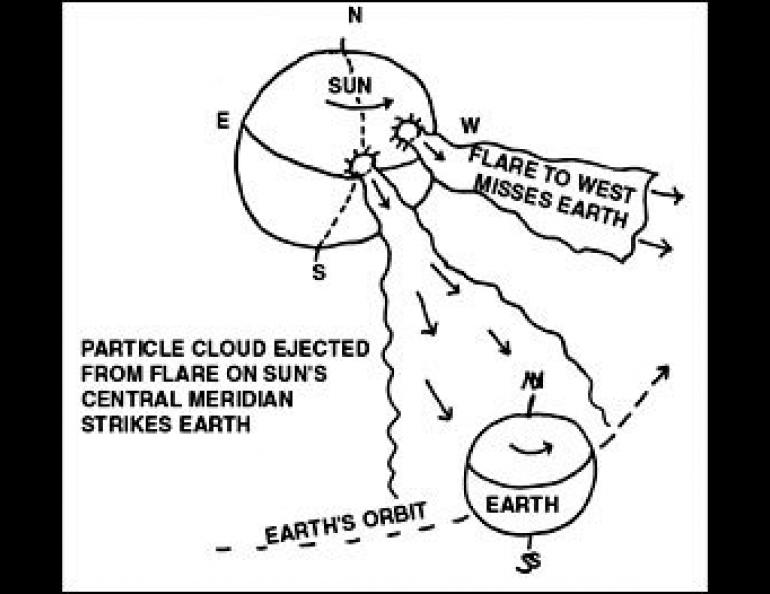
A False Solar Alarm
On April 12, 1978, the national news media distributed the prediction that extensive auroras and radio blackout would cover much of the world. The reason for the prediction was the occurrence of a giant flare on the sun the day before, the largest flare to be observed in several years.
Solar flares jet out high-speed clouds of electrons and protons that reach to the earth's orbit in a day or two. If these clouds are aimed to hit the earth, a portion of them penetrates through the earth's magnetic field to strike the polar atmospheres. There, auroras and disturbances to the radio wave-reflecting ionosphere are caused.
On the night of April 13, big auroras were supposed to be seen far equator-ward of their normal high-latitude habitats. But these auroras were not seen.
The problem was that the solar flare did not occur at the right place on the sun for its ejected cloud to strike the earth. If a large flare develops in the center of the sun, as seen from the earth, or a bit to the left of center, then the earth is likely to be struck by the ejected cloud. However, the solar flare of April 11 occurred about 40 degrees of solar longitude to the west (to the right of center as we view the sun). The material it ejected mainly shot out past the earth.
The earth intercepted the fringe of the blast and did experience rather nice auroras over Alaska and at other high-latitude locations. But the contiguous states were, as usual, not so lucky.





